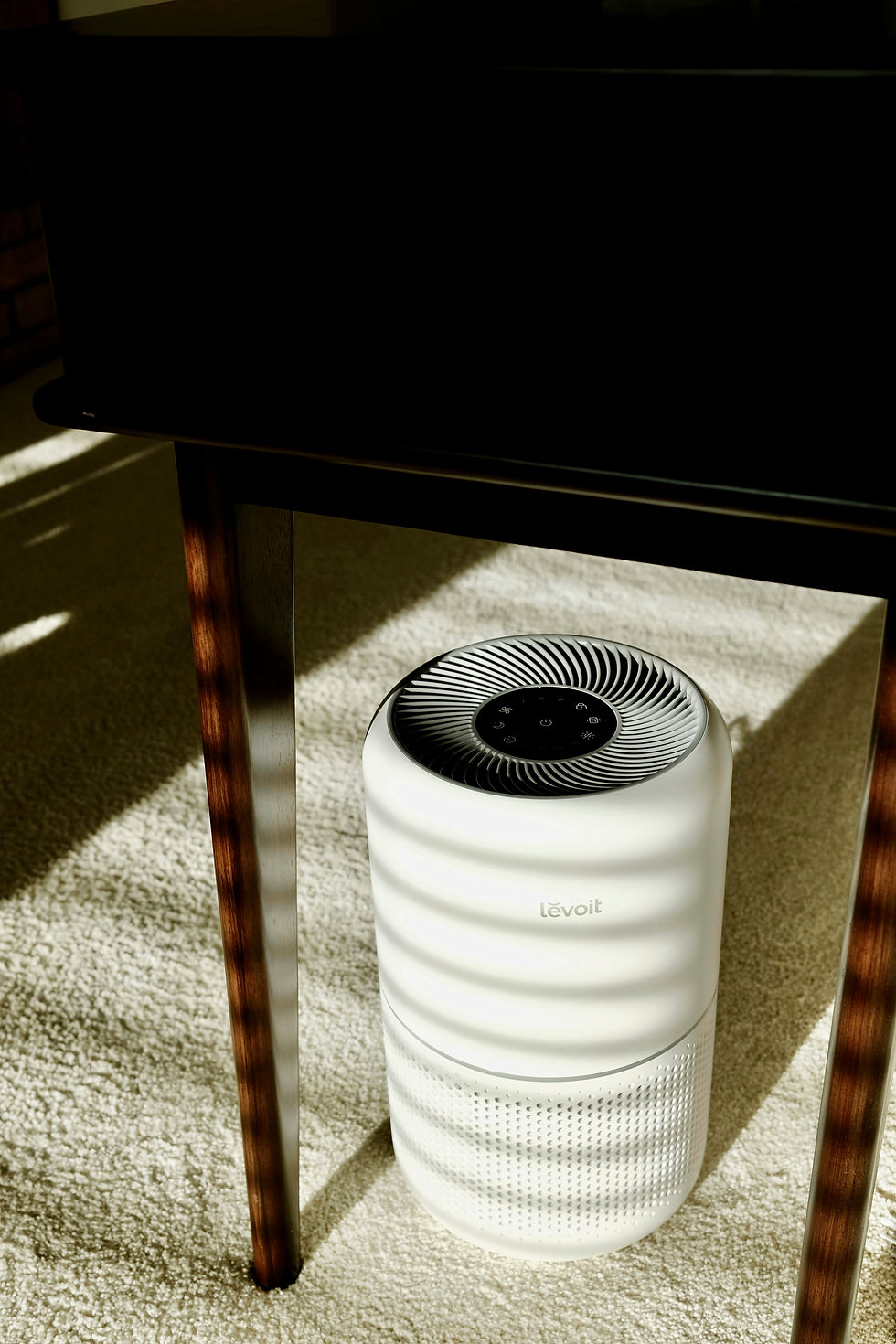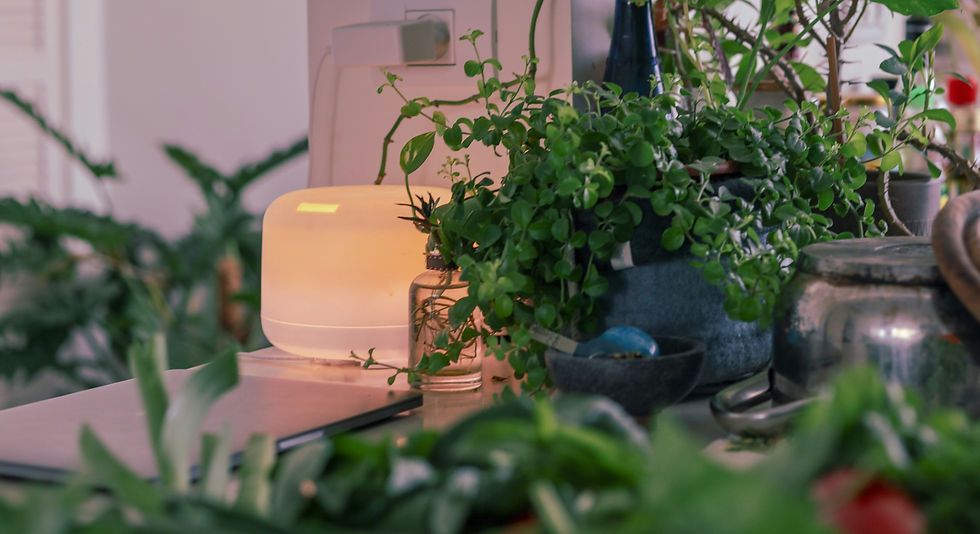Best Places to Put an Air Purifier in Your Home
- allerairus
- Sep 4
- 4 min read
Indoor air pollution can significantly impact your health and well-being, especially if you suffer from allergies, asthma, or live in areas with high pollution levels. An effective way to improve air quality is to use an air purifier—but placing it correctly is just as important as choosing the right model. Whether you’re using an office air cleaner or a home purifier, proper placement will maximize its efficiency and ensure cleaner air throughout your space.

Why Placement Matters
Air purifiers work by drawing in contaminated air, filtering it, and then pushing out clean air. To do this effectively, they need to be placed in areas where air circulation is strong and unobstructed. If a purifier is hidden behind furniture or too far from the main source of pollutants, it won’t perform at its best.
Let’s explore the best spots for placing your air purifier room by room, including some specific tips for dealing with common air quality issues.
1. Living Room
The living room is often the largest and most used space in a home. This is where family members gather, and it may be home to carpets, curtains, upholstery, and other items that trap allergens and dust.
Best Placement: Put the air purifier in a central location, elevated from the floor but not directly against a wall. Avoid placing it behind a couch or under a shelf, as airflow could be restricted.
If your living room connects to other rooms in an open-plan layout, a purifier here can also impact surrounding spaces.
If you or your family experience seasonal or pet-related allergies, consider using a home air purifier for allergies designed to capture dust, pollen, dander, and other airborne triggers.
2. Bedroom
You spend roughly one-third of your life sleeping, so having clean air in your bedroom is crucial. Airborne irritants like dust mites, mold spores, and pet dander can disrupt your sleep and aggravate respiratory conditions.
Best Placement: Set the purifier a few feet from your bed, ideally between your breathing zone and the door to filter incoming air. Make sure it’s not too close to walls or curtains.
Avoid placing it directly next to electronics or other devices that emit heat, which may affect its performance.
If mold is an issue, especially in humid climates or poorly ventilated rooms, opt for a home air purifier for mold that includes HEPA and activated carbon filters.
3. Kitchen
Kitchens are often overlooked, but they can be hotspots for poor air quality. Cooking releases smoke, grease, and airborne particles that can linger for hours.
Best Placement: Near the stove or cooking area but away from direct steam or flames. Avoid blocking air vents or placing it in a corner.
Use it consistently during and after cooking to eliminate odors and airborne particles quickly.
If you're struggling with lingering odors or visible particles from frying or grilling, a home air purifier for smoke can make a noticeable difference.
4. Home Office
Many people now work remotely, spending 8+ hours a day in home offices. Stale air, dust, and off-gassing from electronics and furniture can make this space less than ideal for productivity.
Best Placement: Near your desk but not directly under it. Choose a spot where the unit has at least a foot of space around it on all sides.
If you’re using printers or other office equipment that emit VOCs, make sure your purifier includes an activated carbon filter.
To maintain focus and reduce exposure to indoor pollutants, consider using an office air filtration system built for workspaces.
5. Children’s Rooms or Nursery
Young children and infants are more sensitive to indoor pollutants, so keeping their air clean is essential.
Best Placement: A few feet from the crib or bed, where the airflow won’t directly blow on them but still effectively circulates the room.
Avoid placing purifiers where they can be knocked over or tampered with.
A portable air cleaners home model works well in small rooms and can be moved around as needed.
6. Entryways or Hallways
Although not commonly considered, placing an air purifier near your home's entryway or hallway can help trap pollutants before they spread. Shoes, coats, and outdoor air often bring in pollen, dust, and pollutants.
Best Placement: Near the door or shoe rack where traffic is high. Make sure the purifier is not blocking walkways or doors. This strategy helps create a first line of defense against external contaminants.
7. Rooms with Pets
If you have pets, you know how quickly dander, fur, and odors can accumulate. Wherever your pet spends the most time—whether it’s the living room, a pet bed, or even your bed—is where you should consider adding an air purifier.
Use a purifier with HEPA filtration to trap fine pet dander particles.
Keep filters clean and replace them regularly.
Adding a air cleaners for home allergies model is especially helpful if anyone in the home is sensitive to pet allergens.
Final Tips for Air Purifier Placement
Avoid corners: These limit airflow and reduce efficiency.
Keep at least 6–12 inches of space around the unit.
Don’t block intakes or vents with furniture or curtains.
Run it continuously for best results—modern purifiers are energy-efficient.
Conclusion
Choosing the right spot for your air purifier can drastically improve its effectiveness. Whether you're targeting allergens, smoke, mold, or just stale air, strategic placement in high-use and high-risk areas ensures you get the most out of your investment.
Browse the best office and home air filtration options to find a solution that matches your space and air quality needs.


Comments